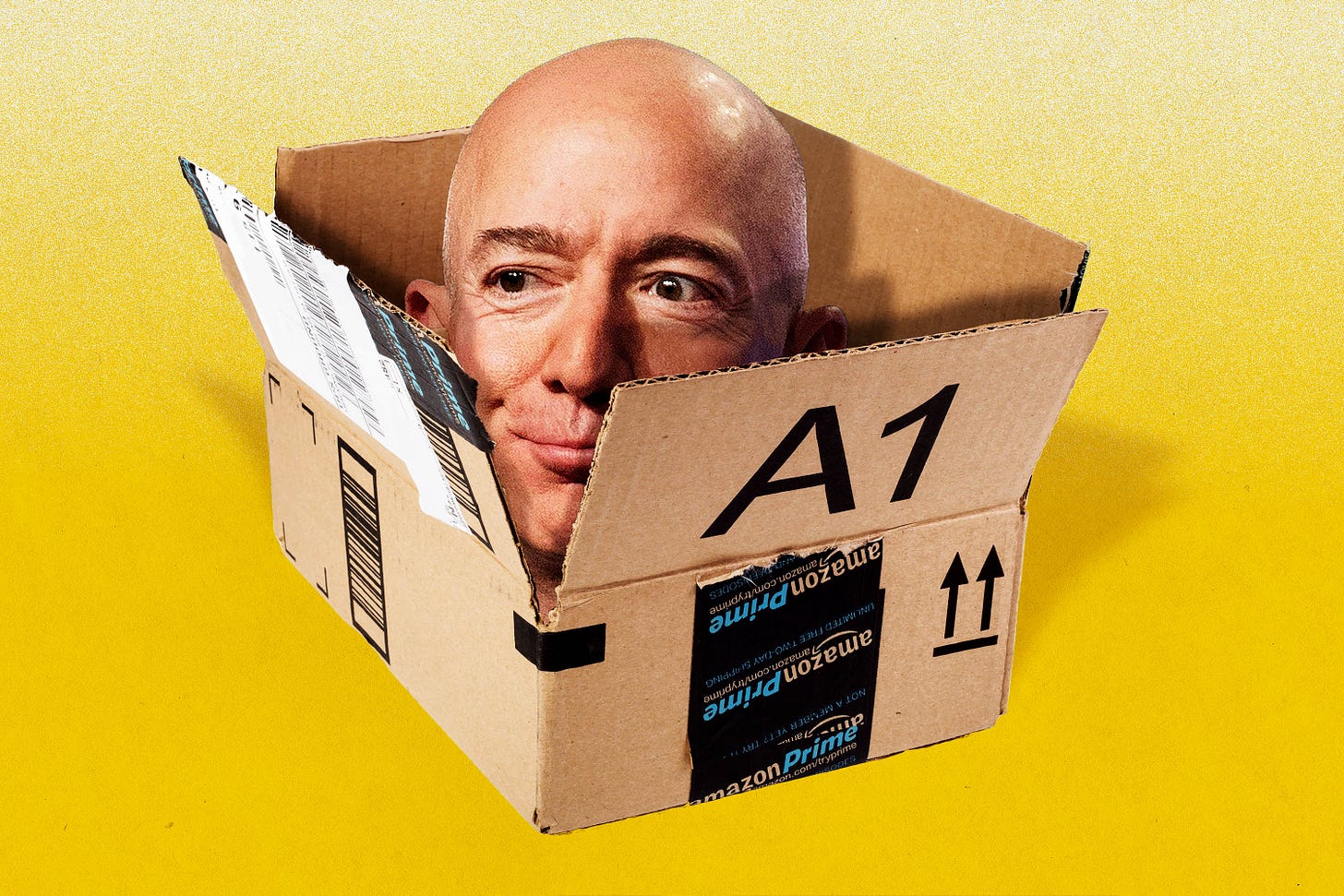Accompanying take-aways written by Andrew Wetherell:
Amazon are renowned for controlling their culture. It is sometimes compared more to a cult than a company. And I must say, it is mighty impressive how they’ve designed and scaled their culture.
My first real interaction with anyone from Amazon was back in 2017. I was talking to an AWS employee. He was raving about how he had just moved a customer off their service. He was so excited that he was allowed to lose AWS money to do what is right for the customer.
He had well and truly drank the Amazon Kool-Aid.
A very unusual culture, if you ask me. How did Amazon do this? How did they create a culture where employees are genuinely excited to lose customers if it serves the customer’s best interest?
The three levers Amazon use
Amazon has a set of 16 leadership principles (as of June 18 2025).
The premise is simple. They expect every employee to be a leader, and the principles set out how leaders act.
An example of a leadership principle is that for customer obsession:
‘Leaders start with the customer and work backwards. They work vigorously to earn and keep customer trust. Although leaders pay attention to competitors, they obsess over customers.’
To operationalise the leadership principles, Amazon use strategy, incentives and process as well as the way leaders behave within the company.
How Amazon use strategy to implement the leadership principles
Strategy is arrived at through an annual planning process. It begins with the senior executive teams goals. The culture starts here.
Amazon use objectives and key results (OKRs), with the majority of goals focused on customer outcomes. This is where Amazon truly stands out. By some estimates around 90% of their goals are focused on customer success versus other companies where 90% of their goals are focused on financials at the top-level.
Once the top level goals are identified, the goal creation trickles down. The leaders below the top echelon of the company identify what part of the executive goals they can deliver, and so on and on the chain of goals flows down throughout the company layer by layer.
Because the top-level goals are mostly focused on customer outcomes, it means each successive layer of hierarchy is equally focused on customer outcomes.
It takes strategic maturity to link outcomes up and down the chain of hierarchy. But if done well, the goals the executive set really do set the tone for the rest of the organisation.
How Amazon uses incentives to implement the leadership principles
The objective is to align employee self-interest with the leadership principles. For example, with the customer obsession principle — how can you make it so that it is in employees’ self-interest to be customer obsessed?
The first thing Amazon does is to skew compensation towards equity the more senior an employee becomes. The theory here is that, having actual ‘ownership’ stake in the company means that it is in the employee’s self-interest to do what is best for Amazon long-term. The better the company does, the more money the employee will get when most of their pay is in shares that vest over several years.
Then I am aware of some social status rewards that were in place a few years ago. I cannot say if this is still the case. The one that stands out in my mind was the ‘Just Do It’ award. This was an abnormally large, well-worn Nike sneaker given to employees who exhibited a bias for action.
The recipient of the sneaker was understood by their team to be especially good at displaying a core leadership principle (bias for action). These status awards can work well as long as they actually convey status to the lucky awardee.
How Amazon uses process to implement the leadership principles
Another key lever Amazon use to create a culture that embodies their leadership principles is by ensuring that processes within the company are well aligned.
For example, to cultivate bias for action, they have a ‘two-door’ decision-making process. The two-door decision making process differentiates between small reversible decisions and large non-reversible decisions.
When a decision is a two-way door sort of speak - meaning you can reverse the decision with low cost - then Amazon employees are expected to make the decision and forge ahead. When they are faced with what is a one-way door - a decision that is not easily reversible - then and only then are they expected to engage in heavy weight decision-making analysis. The fact that smaller and reversible decision are encouraged without sign-off or lengthy deliberations enables bias for action.
Another great example is how Amazon use the hiring process to align their culture with the leadership principles. They employe a process which is called the ‘bar raiser’. The bar raiser is a person designated to ensure the new hire is aligned with Amazon culture (and the principles in particular). They have the power of veto. The bar raiser is a person especially trained to recognise people who fit Amazon well. This process helps the company hire people who are a good fit from the get go.
The role of Papa Jeff - role modelling the principles
At the end of the day Amazon is clearly a reflection of Jeff Bezos. Founders have profound effect on their companies and few have more than Bezos. He’s been a disciplined communicator for years, which has birthed a culture that is now embodied in the leadership principles. To be a good leader at Amazon, you have to live by the principles. Bezos, as the ultimate ‘leader’ of the company, clearly does.
The key element here is Bezos’ consistency. He would state his belief that customer outcomes are aligned with shareholder interests long-term again and again. He’d talk about how to grow the company long-term you should be customer-centric. He obsessed over the customer experience. He ingrained the ‘day 1’ mentality at every opportunity. Every communication within and outside the company would be in line with the core beliefs driving the leadership principles.
Though he remains the Executive Chairman, he’s no longer at the helm of the ship and arguably, even with all their systematising, the culture relied on Jeff. It may be his departure from the day-to-day running of the company why I have heard from several of my contacts within the company that the culture has been degrading.
Practical takeaways
There is a lot Amazon does well in controlling their culture. The things I would highlight for you are:
Strategy: how do you ensure that the goals that you want to work towards are aligned with your desired culture? For example, if you want customer-centricity, are most of your goals about customer outcomes?
Incentives: how do you align the self-interest of employees with the behavioural norms you want in your culture?
Process: how do you make acting with the desired behavioural norms the easiest thing to do? How do you bake it into how things are done?
Leader behaviour: how do you make leaders’ behave in a way that aligns with your culture?
Sources
Working Backwards, Colin Bryar & Bill Carr
Invent and Wander, Jeff Bezos & Walter Isaacson
Discussions with senior Amazon and AWS employees
Jeff Bezos' shareholder letters and public talks














Share this post